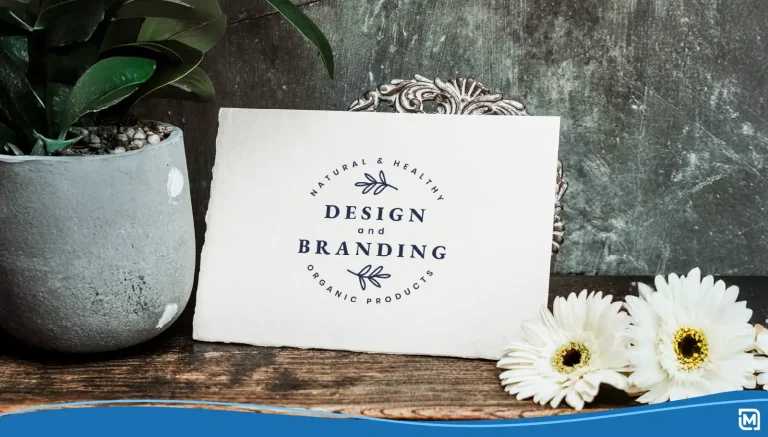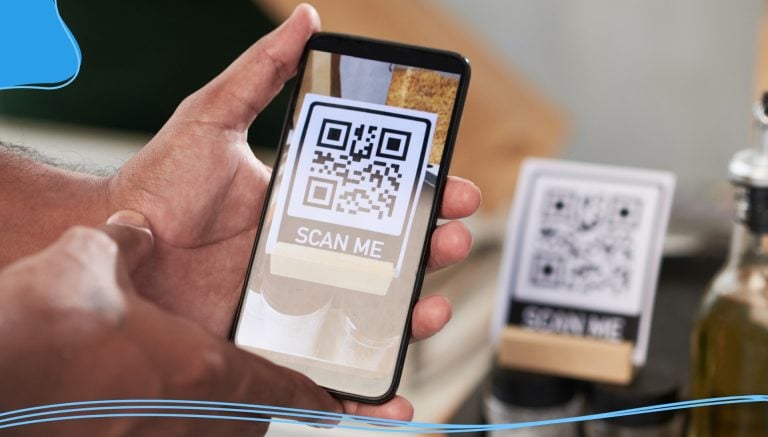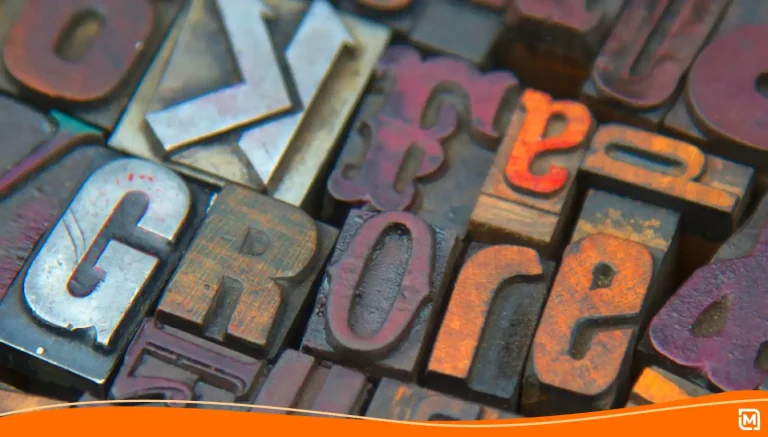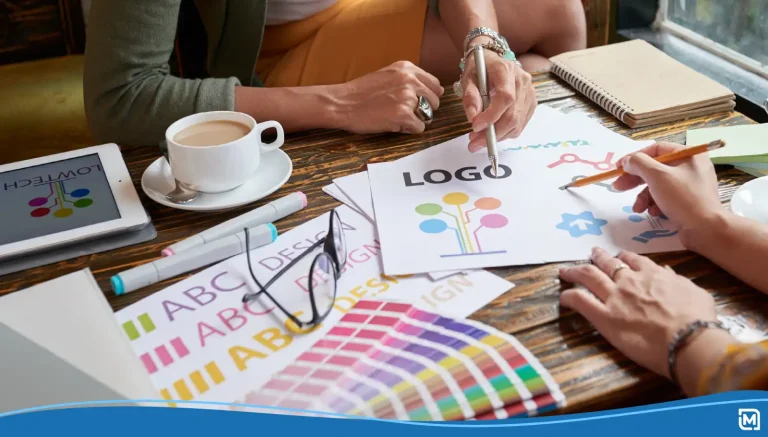You may have read the best-selling Hunger Games trilogy—the story of children forced to fight (and kill) each other in a dystopian society and the rebellion that follows. Or you may have seen one of the popular movies based on the series. They are troubling, entertaining, and thought-provoking.
As entertaining as they are, the books and movies also provide a good lesson on how to build a compelling brand. The rise of Katniss Everdeen from resourceful teenager to “Mocking Jay” and hero of the rebellion holds several great lessons for anyone trying to build a great brand and company.
7 brand building lessons from the Hunger Games to keep in mind
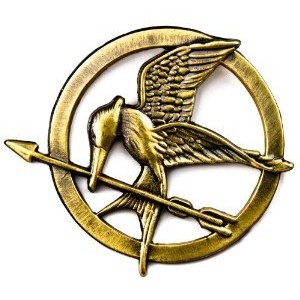 1. Your Brand Needs a Symbol (Logo)
1. Your Brand Needs a Symbol (Logo)
At the beginning of the story, after she has been chosen as a participant in the Hunger Games, Katniss Everdeen is given a pin fashioned to look like a mocking jay—a bird genetically engineered to sing and repeat any sound it hears. She wears the pin throughout the games. During the games (and the story progresses) the mocking jay comes to represent not just Katniss, but also her defiance of the capital, and the entire rebellion.
Similarly, your brand’s logo comes to represent the products and ideas associated with your product or service. It may not even matter what the symbol is (a bear or wolf symbol would have worked just as well for Katniss). Or how much your logo costs. What matters is that you have a symbol that can be positively associated with your brand.
Don’t believe us that it can be just about anything? Great companies have made use of swooshes, lines, boxes, and dots. They have used cartoon characters and silhouettes. Animal shapes, arrows, and letters. Some have costs as little as $35, others cost millions. All have been successful.
What matters is that there is a symbol and that you use it consistently to represent the ideas associated with your brand. If you need a logo to start building your brand check out our logo design software.
2. Your Brand Needs to Stand for Something
The Mocking Jay series starts out with Katniss volunteering to take her younger sister’s place in the Hunger Games (a brutal competition that pits 24 kids in a days-long death match made for TV). Her only purpose is to save her sister. But as the story goes on, Katniss’ purpose changes and expands. She stands up to the government, defying its will, and before the end of the story, becomes the heroine who represents the rebellion against the police state of Panem.
Your brand story isn’t quite that dramatic, right? But you do need to stand for something. Marketing experts have long taught the principles of positioning—finding an idea that your brand can associate itself with and be known for.
Some examples from a few big brands that have done this well:
• Through consistently brilliant advertising, Volvo came to be associated with “safety”. Whether it was true or not, people thought of those boxy Volvos as a safe choice when buying a car.
• In the 60s and 70s, Avis was a distant second to car rental industry industry leader Hertz. So they embraced the idea that if they were going to earn your business, they would have to try harder than Hertz. The cars would be cleaner. Newer. Less Expensive. They would work harder to please their customers.
• Long before everyone carried their iPods and iPhones in their pockets, Apple embraced the idea that their products weren’t for everybody. They had less than 5% of the computer market. But those who did use them were often artists, designers, and other creative types. So Apple advertised that they were for people who “think different”—an idea many people still associate with the brand, more than a decade after the last ad in the campaign ran.
What does your brand stand for? It can be anything, but if you want to build a great brand, it must be something.
3. Design Matters
One of the fortunate things that happens to Katniss upon her arrival in the Capital is the assignment of Cinna, a stylist with a flair for great design, to her team. Tributes from District 12 (Katniss’ home) are traditionally dressed as coal minors for their public appearances—a look that is a bit hokey. Rather than play to type, Cinna reimagines the District 12 look into something dazzling and totally unexpected.
Your brand’s design doesn’t have to be over-the-top or expensive. But it should support the ideas your brand stands for. If you brand is cheap or inexpensive, the design should reflect that. If your brand is exclusive, the design should reflect that. Whatever your brand stands for (whimsy, tradition, good taste, delicious, fun, etc), the design of your packaging, website, logo, and other marketing materials should help customers feel it.
4. Your Brand Needs to Get Attention
Before the games begin, Katniss has an opportunity to perform for the game makers. But they’ve been watching contestants all day, are bored, and are paying more attention to their lavish dinner.
How to get their attention? Katniss pulls out an arrow, aims it toward the crowd gathered around the table, and fires an arrow at the apple stuffed in the roasted pig’s mouth, pinning it against the wall—and shocking the game makers. It works.
When it comes to brands getting attention, you could do worse than these:
• On April 1, 1996, Taco Bell ran an ad in The New York Times announcing that they had purchased the Liberty Bell (to help reduce the national debt) and renamed it the Taco Liberty Bell. Readers were outraged. But the stunt got attention: more than 650 print publications and 400 broadcast reports covered the news. This was before anyone on the Internet could point out it was an April Fools Day joke.
• Pepsi filmed taste tests between their cola and Coca-Cola showing customers choosing Pepsi over Coke. It was wildly successful and forced Coke to change their formula in response (in what became one of the biggest marketing disasters of the century, but that’s another story).
• When author Peter Shankman jokingly tweeted that he wanted a porterhouse steak delivered to the Newark airport when he landed, Mortons Steak House delivered. A tuxedoed waiter was waiting for him upon his arrival. Twitter lit up with hundreds of retweets and the story was repeated dozens of times online.
What can you do to get attention for your brand?
5. You May Need to Take A Risk or Two
Katniss forms an alliance with a very young tribute named Rue, who can’t possibly give her an advantage or any real help in fending off the professionally trained tributes from the richer districts. But it turns out that Rue saves Katniss from those very tributes when she points out a hive of genetically engineered wasps (tracker jackers) which she drops on the competitors, saving her life.
At the End of the first Hunger Games, Katniss and Peeta (the other competitor from District 12) have won. But when the rules are changed to force them to fight each other to the death, Katniss suggests they eat the poisonous nightlock berries they had found depriving the Capital of a winner. She hopes that they game makers would rather have two winners than none, though she can’t be sure. The gamble pays off.
Fans of the books and movies can go certainly name other instances where Katniss (or even Peeta) does something that at first appears to be foolish or risky, but pays off in a big way.
What risks can you take to elevate your brand and grow your business?
Back when Starbucks was a tiny one store coffee bean seller, Howard Shultz became convinced that customers would flock to an Italian espresso bar experience, despite the fact that no one had done it before. When the owners of Starbucks rejected his idea, he left and started his own chain of coffee stores called Il Giornale. A year later, when the opportunity arose, he risked everything to buy the Starbucks name and stores (they had grown to six). 21,160 stores and $15 billion later, it would appear the risk paid off.
So what risks do you need to take to move your business to the next level? Is it an unconventional hire? Launch a new product category? Or maybe you need to cut back and focus on your core product? Try a new marketing strategy? What ever it is, building a truly great brand often requires taking significant risks with big potential pay-offs.
6. You Don’t Have to be the Best. But You Do Have to Survive
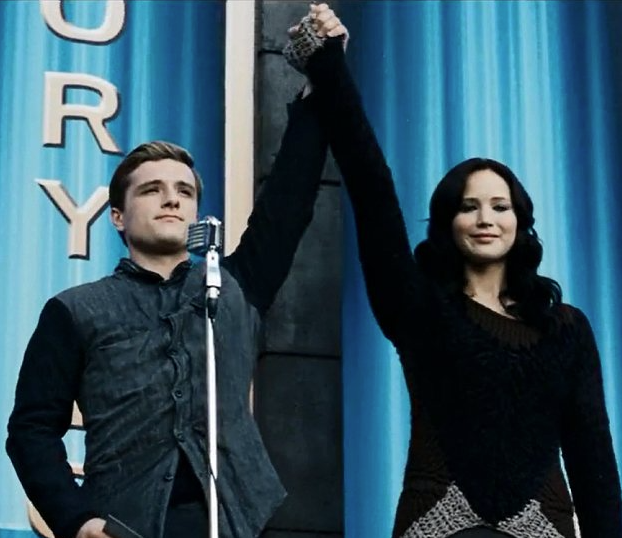 As the Hunger Games begins, it is obvious that Katniss is out gunned. She’s not trained to fight, she is disliked by the other competitors and her potential sponsors, and she isn’t up for the psychological trauma of the games (not that we blame her). Very few people would pick her to win the games.
As the Hunger Games begins, it is obvious that Katniss is out gunned. She’s not trained to fight, she is disliked by the other competitors and her potential sponsors, and she isn’t up for the psychological trauma of the games (not that we blame her). Very few people would pick her to win the games.
But she does have a few skills that help her survive. She is good with a bow and arrow. She is compassionate (at times). And she wants to protect Peeta. She’s not the best contestant to win, but by applying the skills she does have, plus a bit of luck, she does win.
The same lesson is applicable to creating a great brand. The best product doesn’t always win. In the late 70s, Sony developed Betamax, a video recording technology that many believed was far superior to existing VHS tapes. Unfortunately for Sony, competing manufacturers adopted the other standard. Both products went to market, where customers preferred Sony’s competitors over Betamax.
The list of inferior products that have succeeded is long. Most markets have room for more than one competitor, which means several products of differing quality can succeed.
You don’t have to be the best, but you do have to do everything you can to succeed.
7. You Probably Can’t Do It Alone.
Perhaps the biggest lesson from the Hunger Games trilogy is that while one person can make a difference, it takes a lot of teamwork to win. Katniss needs help from Rue and Peeta to win the first games (along with stylists, sponsors, and advisors), and a larger contingent of allies to survive the second. And to challenge the Capital, she needs help from the districts, including the mysterious District 13.
From time to time, brands find it advantageous to work together to promote their mutual interests. This recent commercial from Arby’s is a good example. But it’s not the only one.
Automakers often promote complimentary brands with their cars—things like the brand of tires, satellite radio, or services like OnStar. Department stores often have kiosks or entire departments dedicated to particular brands. Airlines and credit card companies often promote each other. And the list goes on.
The same is true for your brand. To grow your brand and find real success, you’ll need the help of partners, customers, and others on your team. Who can you rely on for help in building your brand and growing your business? Are there products related to yours that you can hitch yourself to or cross-promote?
We’ve made it sound simple—follow these seven ideas and you’ll succeed. It’s not simple. It takes a lot of hard work and a bit of luck. It takes a remarkable product, as well as a logo, a purpose, and great design. It requires taking risks and doing everything to survive.
But if you do what Katniss Everdeen does in the Hunger Games, you just might create and grow a remarkable, compelling brand.
Good luck and may the odds be ever in your favor.
